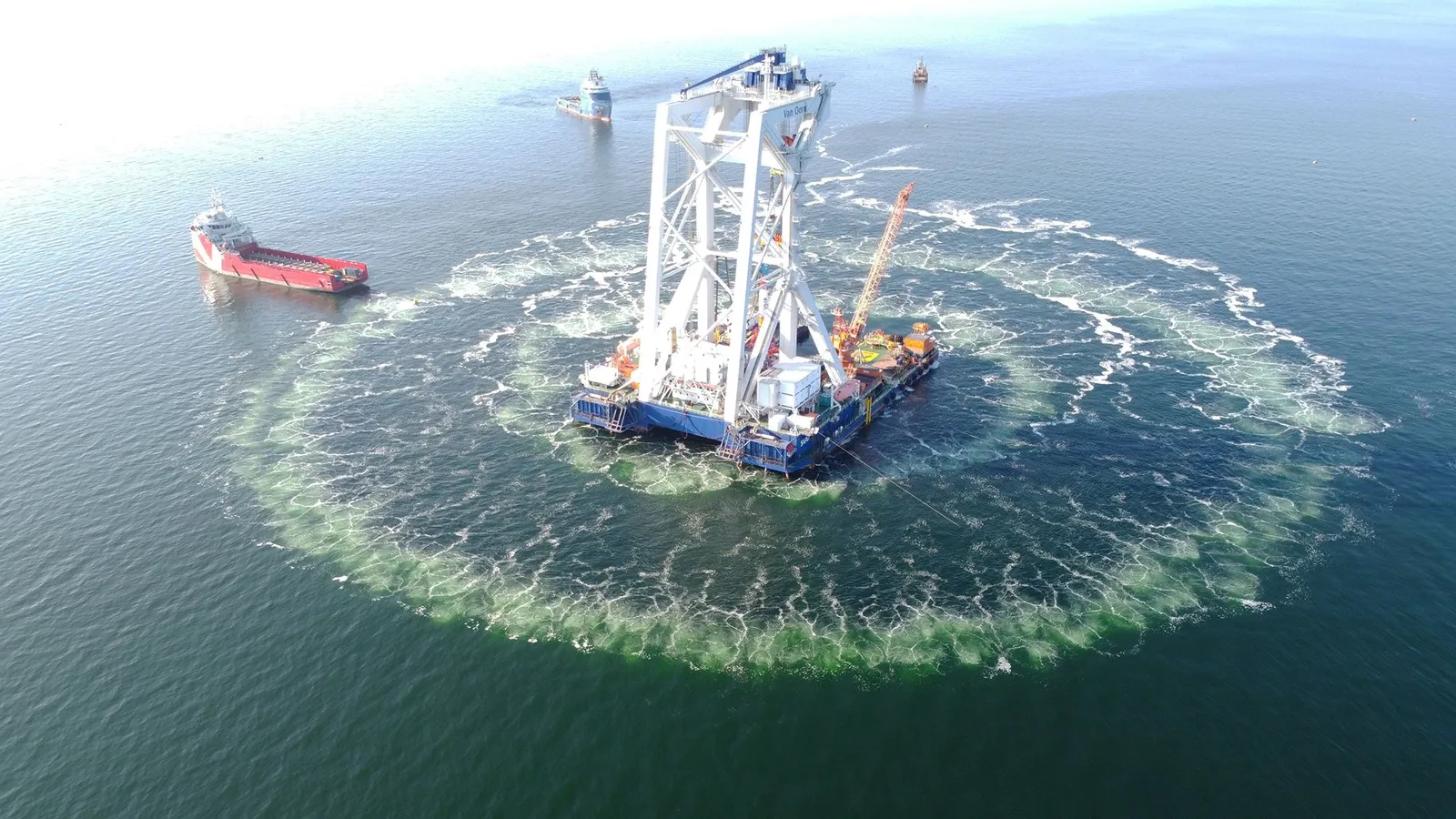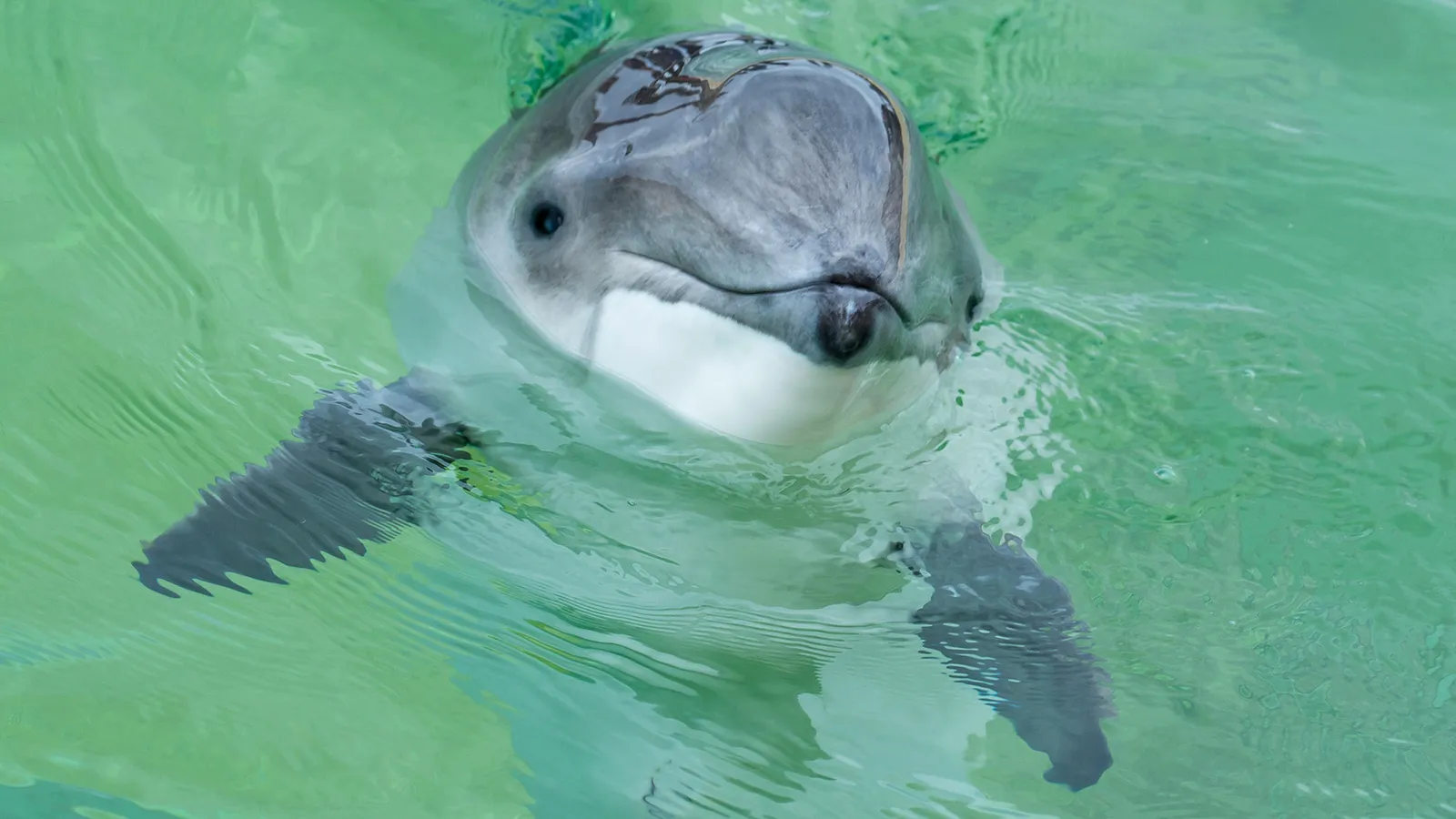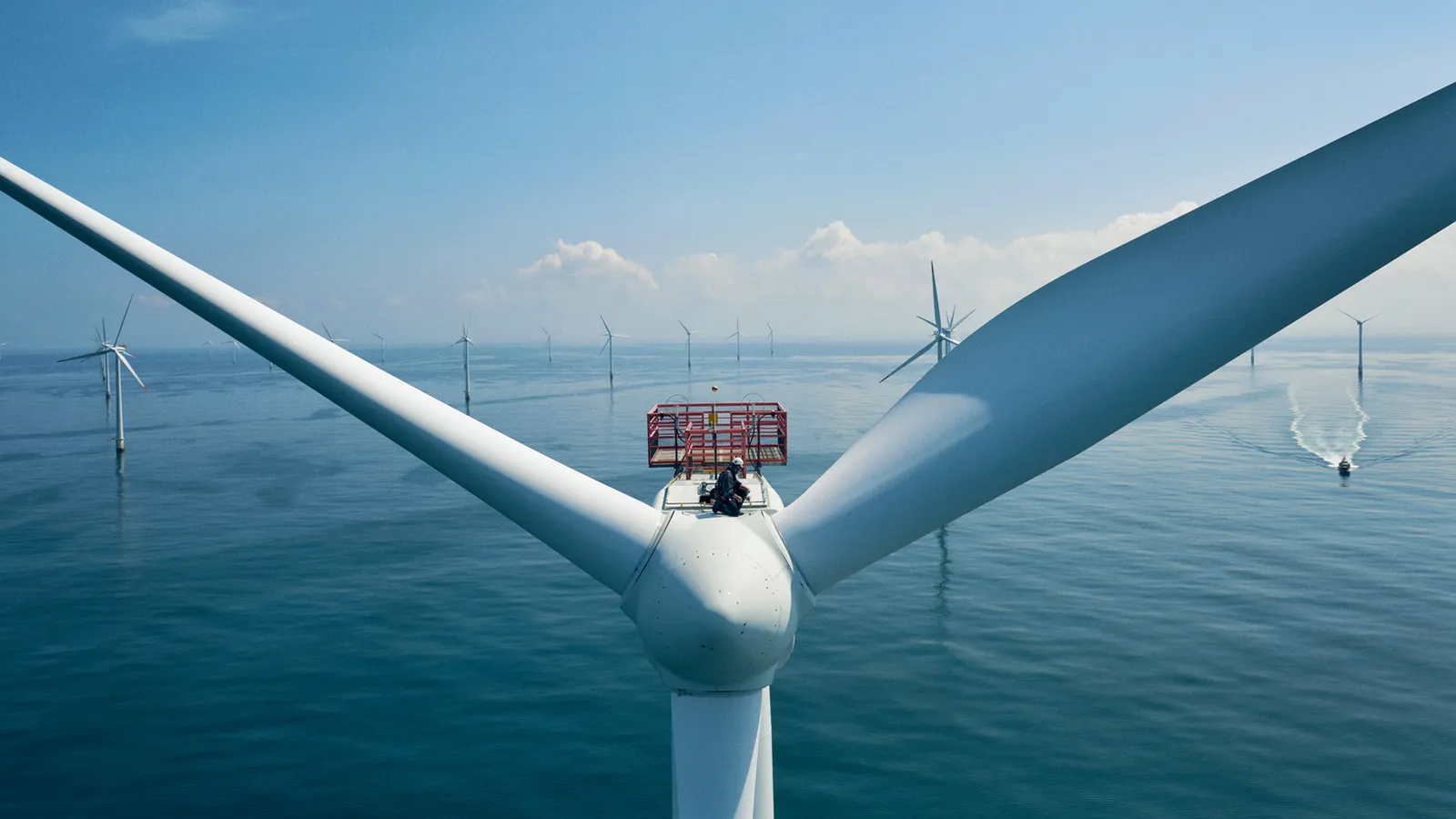Press & Media
In The News.

In The News.

Image Credit: Hydrotechnik Lübeck
Over the past decade, a curious invention has spread across Europe's northern seas. It's called a big bubble curtain, it works a bit like a giant jacuzzi, and it helps protect porpoises from the massive underwater noise caused by wind farm construction.
A very large, perforated hose is laid on the seabed, encircling the wind turbine site. Air is pumped through, and bubbles rise from the holes to the surface of the water, forming a noise-buffering veil.
The quirky gadget, also known as a big bubble veil, was pioneered in Germany to help protect the endangered harbour porpoise, the only cetacean species living in its North Sea and Baltic Sea. The bubble curtain was designed around the porpoise's specific needs and traits, lowering wind farm construction noise to a threshold deemed safe for the species, based on scientific research. Its proven muffling effect may also benefit other marine mammals that are vulnerable to noise, such as seals.
The bubble curtain is now widely used by northern European countries racing to build more offshore wind farms as part of their efforts to curb CO2 emissions and fight global warming. Countries including the Netherlands, Germany, Denmark, and Belgium have pledged to turn the North Sea into "the world's largest green power plant", aiming to jointly increase their offshore wind capacity there to 300GW by 2050. At the same time, they are under pressure to reduce the potential impact of wind farm construction noise on marine creatures, for whom sound is everything.

Harbour porpoises in the North Sea and Baltic Sea have been under severe strain from a range of human activities, researchers say (Credit: Alamy)
"Pretty much every creature in the sea relies on underwater sound. On land, most animals tend to use vision as their main sense, but in the underwater world, it's hearing," says Carina Juretzek, a specialist in underwater noise at Germany's Federal Maritime and Hydrographic Agency, which regulates and approves offshore wind farms.
The small, round harbour porpoise is very sensitive to sound. It uses echolocation to navigate, communicate, hunt, and avoid obstacles in often dark or murky waters, emitting ultrasonic clicks that bounce off fish or objects. Loud, human-made underwater noise – including from shipping and offshore wind farm construction – can disturb and disorient the porpoise.
Bubble curtains are based on a simple principle: sound travels faster through water than through air, because water and air have different densities. When sound waves hit the bubble curtain, they slow down, break up, and bounce against the bubbles, resulting in a loss of energy. The remaining sound that emerges on the other side of the curtain is therefore quieter.
In the North Sea, the number of wind turbines has risen from only 80 in 2002 to more than 4,000 today – and many more are planned as part of the green energy revolution. Spinning in fierce, fast sea winds, offshore turbines can produce more energy than those on land. On average, an onshore wind turbine generates around 2.5 to 3 megawatts (MW), whereas the average offshore turbine produces 3.6 MW. The scale of the latest offshore models is staggering, with heights of more than 270 metres (890ft), and each blade measuring more than 100 metres (330ft), about the length of a football pitch. A single turbine can generate enough power for a small town of 18,000 households every year. Construction of the Dogger Bank Wind Farm, a development off the coast of England, involved a ship that's as tall as the Eiffel Tower.
As one might expect, installing these giants at sea comes with a lot of noise.
Even before the building begins, the seabed may have to be cleared of toxic World War Two bombs or mines – which happens via controlled explosions. Next, a long steel foundation, called a pile, is driven deep into the seabed with several thousand hydraulic hammer blows. This foundation then supports the turbine. The process is called pile-driving, and its sound is a source of concern to regulators and scientists who monitor the well-being of porpoises.
"Pile-driving noise really is one of the more intense human-made noises we can inflict on the environment," says Juretzek. "There's scientific evidence that this kind of noise would affect the marine environment if it's not reduced in some way. And that's why Germany has decided that this pile-driving noise has to be lowered through various technical steps."

Europe has seen a construction boom in offshore wind turbines, which are bigger and more powerful than the ones on land (Credit: Vattenfall)
At close range, pile-driving noise can cause temporary hearing loss or even permanent deafness in harbour porpoises, leaving them disoriented and unable to survive. There can also be indirect damage. A 2013 study of pile-driving during the first offshore wind farm built in the German North Sea found that the noise prompted harbour porpoises to flee the area, swimming more than 20km (12 miles) away. Harbour porpoises need to eat and hunt almost constantly to meet their energy needs. Fleeing over long distances can disrupt that vital activity and make them vulnerable to starvation. Seals may be similarly affected.
There are efforts to make construction less noisy in the first place, by using floating turbines for example, or securing the foundations through suction – though this only works if the type of sea floor, and water depth, permit it.
Other noise related to wind farm construction, such as shipping traffic, can also disturb them. In fact, before pile-driving, loud noise is used on purpose to scare them away for their own safety. There is some evidence, however, that such loud deterrents may harm the mammals' hearing.
The bubble curtain combined with other measures can cut noise by 99%
In response to the scientific findings, countries including Germany, Denmark, and the Netherlands have introduced porpoise-shielding rules and guidelines for wind farm developers. Germany's regulations, which researchers have called "the strictest worldwide", include mandatory noise thresholds and the use of technologies such as the bubble curtain. According to a 2019 analysis, the German restrictions sparked "unprecedented innovation" in measures that substantially reduced noise pollution while allowing wind farm development to continue.
The invention has also seen interest beyond Europe. Hydrotechnik Lübeck, a German engineering company that developed the big bubble curtain with funding from Germany's ministry of the environment, has for example partnered with a US company to deploy it in Vineyard Wind, the first large-scale offshore wind farm in the US, off the coast of Massachusetts.